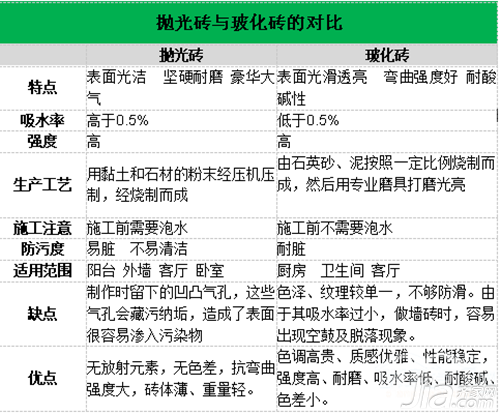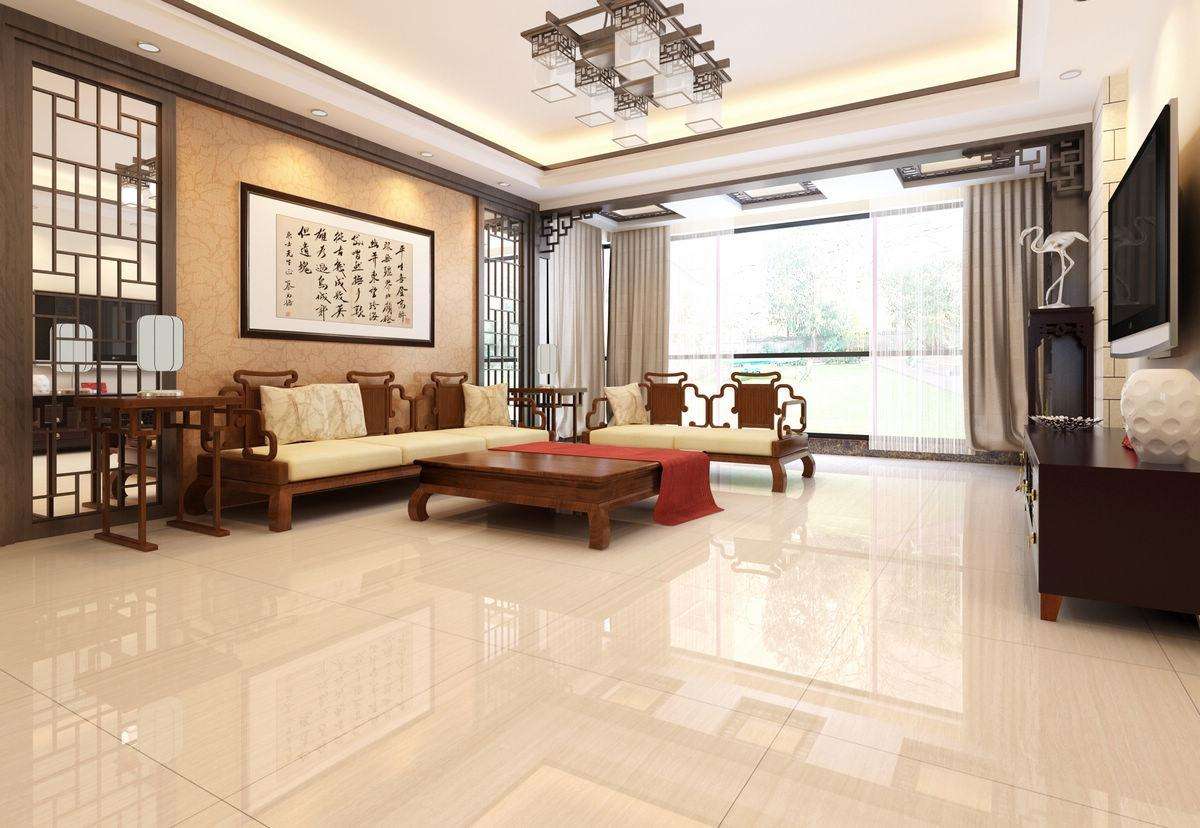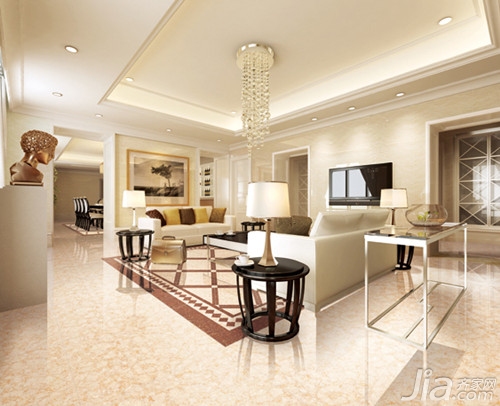The difference between vitrified tiles and polished tiles teaches you how to distinguish between tiles and polished tiles
With the development of society, the current owners are paying more attention to the interior decoration and the owners are not only looking at the practicality of the home but also considering the decorative effect. Emerging glass tiles are getting more and more attention in this demand. So, do you know what is a tile? What are the differences between vitrified tiles and polished tiles ? Due to the texture of natural stone, vitrified tiles have gradually become the main material for people's home decoration. And more and more advanced science and technology make the specifications of the vitrified tiles more and more colorful. The rooms decorated with vitrified tiles highlight the elegant taste, and the vitrified tiles also have multiple functions. The perfect combination of appearance and practicality. If you can't fully understand the difference between the tiles and the polished tiles , let's learn with me! What is a polished tile Polished bricks are bright bricks that have been polished on the surface of the whole body of bricks and are used in places other than kitchens and toilets. Polished bricks are light, hard and hard to bend. Although the surface looks very smooth, the anti-skid performance is still very good. One of the disadvantages of polished tiles is that the air holes left during the production process make the polished tiles easily contaminated. Therefore, to produce a good polished tile, we must have a good anti-fouling treatment technology. What is a tile Vitrified tiles are actually full tiles. Because of the difference in the manufacturing process, the densification degree is higher than that of a common floor tile, and its surface is smooth but does not require polishing, so there is no problem of polishing the air holes. Vitrified tiles are a kind of reinforced polished tiles that are fired from high temperatures. The texture is harder and more resistant than the polished tiles. The main difference between glass tiles and polished tiles is the water absorption. The vitrified brick is a kind of bright brick that has been polished on the surface of the whole brick body and belongs to the whole body brick. Ceramics with a water absorption of less than 0.5% are called vitrified tiles. Polished tiles with a water absorption of less than 0.5% are also vitrified tiles (above 0.5% only polished tiles are not vitrified tiles), then the vitrified tiles The mirror-polished surface is a vitrified polished tile because its hardness is relatively high due to its low water absorption and it is not prone to scratches. Vitrified tiles are made of quartz sand and mud fired at a certain proportion, then polished but do not need polishing, the surface is smooth and translucent like a glass mirror, is the hardest kind of all tiles, and its water absorption, edge Straightness, bending strength, acid and alkali resistance are superior to ordinary glazed tiles, polished tiles and general marble. The characteristics of glass tiles 1, colorful and soft, no significant color difference. Natural granites have large differences in color due to the time of diagenesis and the depth of the rock formation. 2, no harmful elements. Granite is a natural mineral that has been buried deep in the earth's crust for a long period of time. It has not been sintered at high temperatures and therefore contains trace amounts of radioactive elements. If it is exposed for a long time, it will be harmful to health. 3, the thickness is relatively thin, high flexural strength, lightweight bricks, building weight reduction. Natural granite has low strength and heavy weight, which increases the load of the building and brings a series of difficulties to the process of transportation and paving. 4, bending strength greater than 45mpa. The granite flexural strength is about 17-20mpa. 5, high-temperature sintering, complete porcelain produced a variety of crystals such as mullite, stable physical and chemical properties, corrosion resistance, strong stain resistance, long lasting as new. Granite due to the natural formation, the time of material, weathering, etc. are not the same, resulting in different density, strength, use two years after the gradual loss of luster, rough surface wear, difficult to clean, affect the appearance. Specification of vitrified tiles The tiles are mainly floor tiles, and the common specifications are 400mm x 400mm, 500mm x 500mm, 600mm x 600mm, 800mm x 800mm, 900mm x 900mm, and 1000mm x 1000mm. The difference between glass tiles and polished tiles - use To understand the difference between vitrified tiles and polished tiles, one has to be aware that the polished tiles are made of clay and stone powders that are fired at a certain proportion and polished to give the front light a rich texture. After polishing, the stone becomes very bright. General polished tiles are suitable for the decoration of balconies and facades. Vitrified tiles are mainly used for indoor floor and wall decoration. The difference between tiles and polished tiles - slip resistance The surface of the polished tile is polished to make the surface smoother and brighter. It is because of this, the problem has come, the polished tile itself is not slippery, once the water on the ground, it will be particularly slippery, people walking on the polished tiles will appear cautious. The surface of the vitrified tile is not polished, so its slip resistance is better. The difference between vitrified tiles and polished tiles - resistance to dirt Easy dirty is a fatal flaw in polished tiles. This is due to the fact that the polishing bricks leave irregularities in the pores during polishing. These pores can filth and cause the surface of the polished tile to look dirty. So in order to solve the difficult problem of polished bricks in the industry, vitrified tiles have appeared on the market. How to distinguish between tiles and polished tiles? Because the polished tiles are polished directly with the bricks of the whole brick, although the surface is bright, the pores are left during polishing, so the colored liquid is easy to infiltrate. When identifying tiles and polished tiles, the easiest test is to use a pen to write a few words on the surface of the brick. The poor polish turns, wipes it immediately after writing, and is not necessarily clean. The handwriting may have infiltrated. . A good brand, because the press is good, the density is high, plus the high temperature of the firing, the density is very high, so it is not easy to infiltrate, but this is not absolute, no matter how good the polish turns, if you write the word after 10 minutes In addition, there will be traces that will never be erased, because the ink has penetrated into the brick. Editor's summary: The above is the difference between vitrified tiles and polished tiles, tile knowledge: teach you how to identify the relevant introduction of vitrified tiles and polished tiles, hoping to help meet the needs of friends! If you have any questions, please feel free to ask questions, we will ask you as soon as possible! For more information, please continue to follow our website. You can also purchase more of your favorite products on Qijia Mall! Tile Tiles Buy Tiles Care
High Speed self-Recovery Rapid doors are the technological evolution of old, PVC high speed doors or heavy folding doors, now obsolete and not suited to today's industrial needs.
High-quality panels, the resistive safety edge fitted to the bottom edge of the door, photocells and barriers make this product both safe and durable, being totally self-repairing, thanks to its special [Anti Crash System".
This door designed with a perimeter structure in galvanized or stainless steel, which is ideal for sliding panels. The door panel rides effortlessly within a track, thanks to the special profile and hinge designed by us, requiring low maintenance. The panel is rolled up on a roller placed within the upper crossbeam.
The door can be equipped with a counterweight or ups batteries, to fully open the door in case of power failure, and can also be equipped with large transparent sections to create a brighter and safer working environment.
Self-Repairing Door Curtain made of reinforced PVC, with flexible weighted soft bottom edge.
The edge of curtain has continuous injection molded teeth that then move up and down in a self-lubricating polyethylene track attached to structural galvanized side frames.
Self-Recovery Rapid Door,Self Recovery PVC Rapid Door,Self Recovery Rapid Rolling Door,Self Healing Roll Door Shenzhen Hongfa Automatic Door Co., Ltd. , https://www.hffastdoor.com

